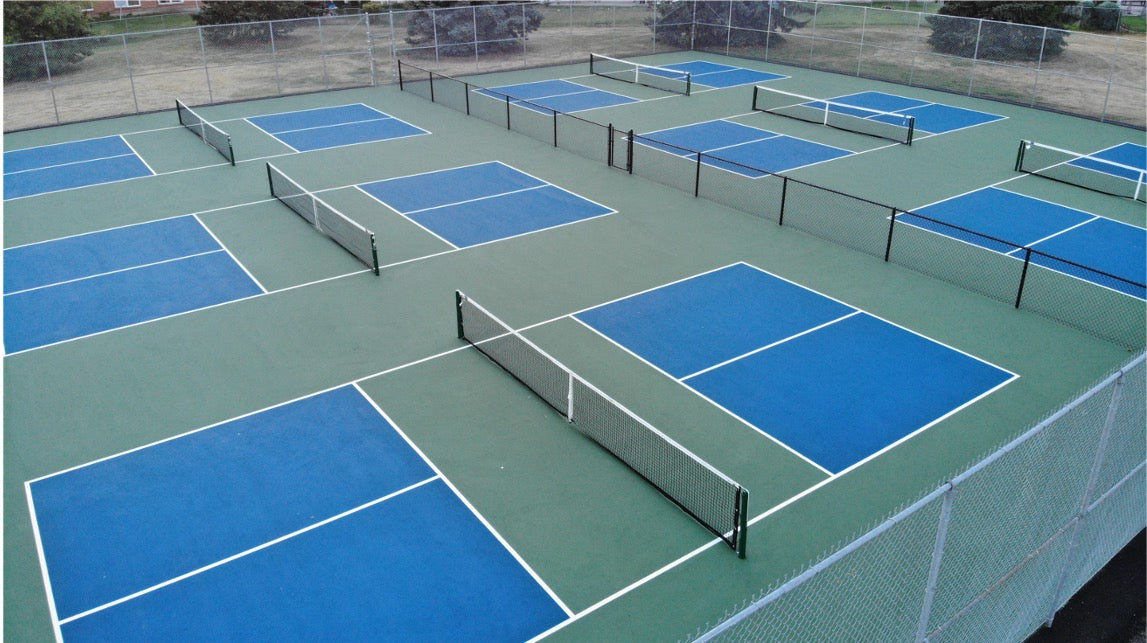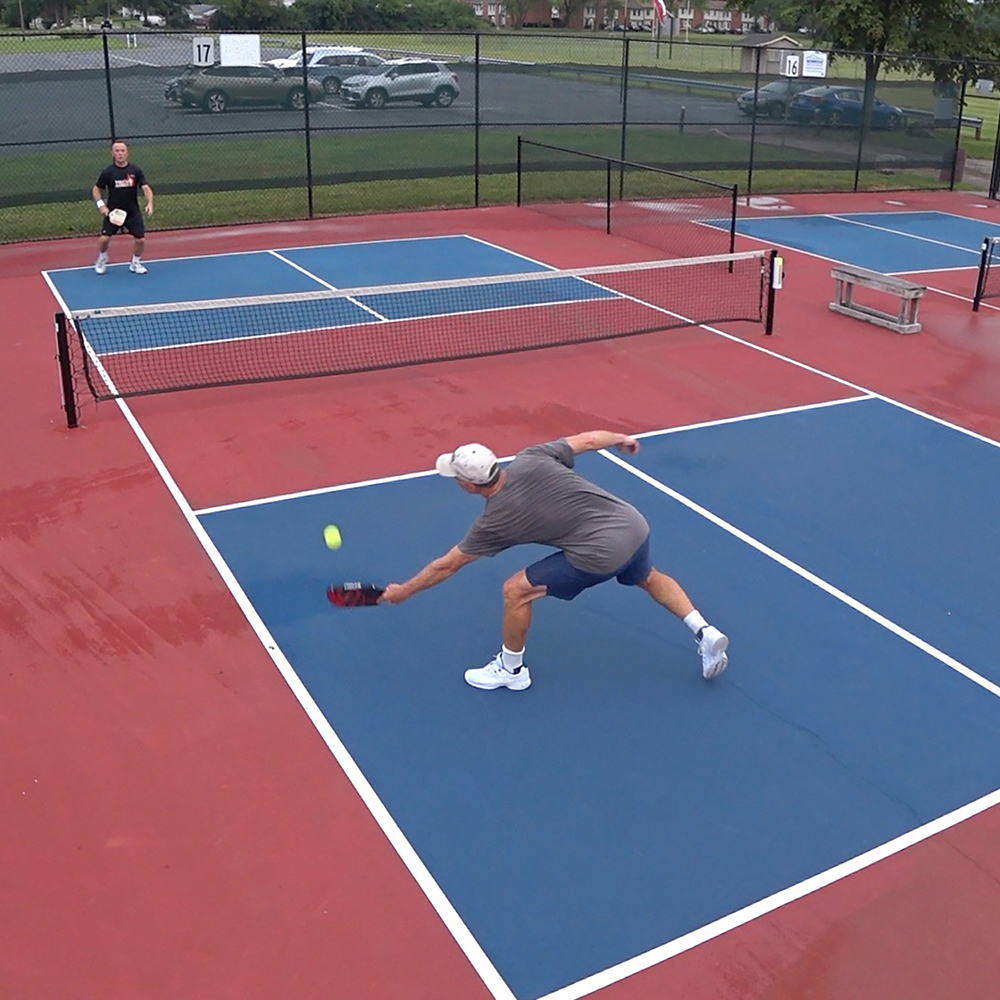Technologies in Pickleball Court Construction: Trends You Must Know
Wiki Article
Increase Citizen Interaction With Community-Driven Pickleball Court Projects
The appearance of community-driven pickleball court jobs offers an unique chance to cultivate neighborhood engagement and strengthen neighborhood ties. The actual inquiry stays: exactly how can these grassroots initiatives be purposefully implemented to make certain sustainability and inclusivity in diverse neighborhoods?Relevance of Area Involvement
Community involvement is an important component in the effective growth of pickleball court tasks, as it cultivates a feeling of ownership and collective responsibility among residents. When community members are actively included in the planning and implementation stages, they are most likely to advocate for the project's long-term success. Involving stakeholders such as neighborhood gamers, family members, and recreational groups ensures that the centers satisfy the varied demands and choices of the neighborhood.Furthermore, community engagement grows an encouraging environment where citizens feel encouraged to add their sources and ideas. Pickleball court construction. This collaborative approach can bring about cutting-edge options that boost the design and performance of the courts, making them much more enticing to a bigger target market. Additionally, entailing homeowners in decision-making processes can strengthen social ties, advertising inclusivity and unity within the neighborhood
The visibility of area assistance for a pickleball job can also play a crucial function in securing funding and authorization from local authorities. By showing a shared dedication to recreational advancement, communities can properly advocate for sources and policy modifications that prefer the establishment of pickleball courts, inevitably enhancing the neighborhood culture and entertainment landscape.
Actions to Initiate a Task
Initiating a pickleball court job calls for a methodical technique that develops on the structure of community interaction developed in previous discussions. The primary step is to put together a task board comprising regional stakeholders, lovers, and reps from relevant organizations. This varied team makes sure that numerous perspectives are taken into consideration.Following, perform a demands evaluation within the area. Surveys, focus groups, and public conferences can be efficient in assessing interest and gathering input on prospective court areas, wanted facilities, and organizing preferences. Following this, establish a job strategy laying out duties, purposes, and timelines.
Once the plan is in place, engage with local authorities to recognize zoning regulations and any required permits. Communicating transparently with the community throughout this process is important, as it promotes depend on and urges additional participation.
Furthermore, organizing community events can aid keep momentum and excitement. These occasions can offer as systems for further conversation and aid to reinforce neighborhood ties. File every step taken and keep in-depth records, as this will certainly be valuable for future phases of the project, including financing and source acquisition.
Financing and Resources Available
Protecting funding and sources for a pickleball court project is often a critical action that can figure out the project's usefulness and success. Different avenues exist for acquiring financial backing, varying from public funding to private sponsorships. City government Discover More Here gives, frequently focused on promoting area wellness and entertainment, can provide considerable financial support for such initiatives.In addition to federal government resources, not-for-profit organizations and structures regularly offer gives specifically for sporting activities and community advancement tasks. Involving neighborhood services as enrollers can likewise be a rewarding technique; lots of companies are excited to spend in community efforts that boost their business social responsibility profile.
Crowdfunding platforms have emerged as a practical alternative for grassroots fundraising, enabling community members to contribute directly to the task. This method not only increases funds however likewise fosters a sense of ownership among participants.
Design and Planning Considerations
Efficient layout and planning are fundamental elements of any type of successful pickleball court project following the purchase of funding and sources. A detailed official statement assessment of the suggested area is vital; this consists of evaluating availability, closeness to existing area amenities, and the capacity for exposure and involvement.The format of the court must follow main size specs while considering the bordering environment. Incorporating features such as seating, color structures, and proper lights can substantially improve player experience and spectator enjoyment. Products chosen for the court surface need to focus on toughness and security, with options like acrylic or asphalt offering optimum performance.
Involving neighborhood participants in the style procedure cultivates a feeling of ownership and guarantees that the facility meets neighborhood requirements - Pickleball court construction. This can be achieved via public assessments and studies, allowing stakeholders to share their preferences and problems
Sustainability must additionally be a concern; incorporating eco-friendly materials and techniques can add to long-term feasibility. Creating an upkeep plan to make certain the court remains in excellent problem will certainly support recurring area involvement and involvement in pickleball tasks.

Success Stories and Instance Studies
Highlighting the transformative impact of community-driven campaigns, numerous success stories highlight exactly how collaborative efforts have led to the advancement of vibrant Look At This pickleball courts throughout different areas. One notable example is the campaign in a small town in Florida, where homeowners grouped together to convert an underutilized tennis court right into a devoted pickleball center. With fundraising occasions and partnerships with local businesses, the neighborhood raised adequate funds to install new webs, resurfacing, and lines, eventually fostering a vibrant hub for regional gamers.Similarly, in a suburb of California, a grassroots activity emerged to develop pickleball courts in a local park. The job not just involved volunteers for building but likewise consisted of workshops to involve community members in the sport. Therefore, the courts came to be a centerpiece for social interaction and health and fitness, bring in players of any ages.
These instance studies exemplify exactly how community-driven tasks can enhance regional interaction, advertise exercise, and enhance social bonds. By leveraging collective sources and enthusiasm, areas can effectively produce and maintain pickleball facilities that offer varied populaces and foster a sense of belonging.

Final Thought
By focusing on stakeholder participation throughout the planning and application stages, these campaigns can efficiently deal with varied community requirements. Eventually, such initiatives add to the transformation of public areas right into vibrant centers of fitness and social interaction, enhancing area connections.The emergence of community-driven pickleball court jobs provides a special possibility to cultivate regional engagement and strengthen area connections.Community involvement is an important aspect in the successful growth of pickleball court jobs, as it cultivates a sense of possession and cumulative responsibility amongst locals. When neighborhood members are actively involved in the preparation and implementation stages, they are a lot more most likely to promote for the task's lasting success.Starting a pickleball court task needs a methodical approach that develops on the structure of neighborhood engagement developed in previous discussions. The job not just engaged volunteers for construction but additionally included workshops to engage community members in the sporting activity.
Report this wiki page